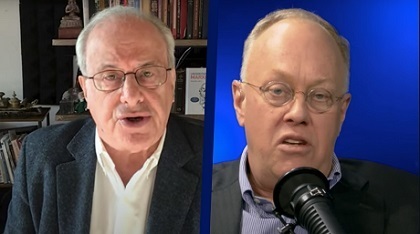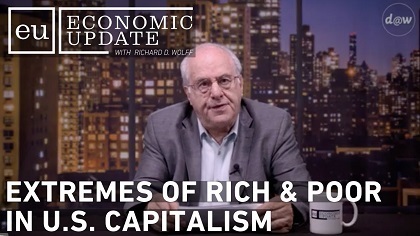4 Likes
1 Shares
Source: https://pluralistic.net/2024/10/02/upcoded-to-death/#thanks-obama
Epic can automatically recode "diabetes with no complications" from a Hierarchical Condition Category code 19 (worth $894.40) as "diabetes with kidney failure," code 18 and 136, which gooses the reimbursement to $1273.60.
#crime #corruption #Problem #fraud #usa #costs #news #Software #economy #ehr

source: https://www.independent.co.uk/advisor/vpn/cybercrime-statistics
It’s a battle for individuals and smaller companies just as much as it is for big organisations; as the digital space is expanding and as #AI is impacting our everyday lives, hackers are getting more inventive every day. And, if you’re not convinced that cybercrime is going to be an issue in your life, the statistics below will change your mind.
With the security quality of our software, the internet is only running because it is more profitable for cybercriminals to keep the internet running for ramsonware attacks.
#security #cybersecurity #digital #internet #ransomware #future #economy #news #technology #software #problem #finance #money #costs #crime
watch: https://img-9gag-fun.9cache.com/photo/ae93m9m_460svav1.mp4
They contribute more to the public good if they believe that others contribute as well. For this reason, #pessimism about others’ contributions is harmful. It can constitute a critical obstacle for climate action.
#future #society #politics #earth #environment #finance #news #activism #emissions #costs #change
The algorithm was able to track how much Amazon’s power in the e-commerce field would get competitors to move their prices, and in instances in which competitors didn’t move their prices, the algorithm would return Amazon’s prices back down, according to the Journal.
(I don't link to the original source the "Wall Street Journal" because of the paywall.)
Amazon is #neoliberalism in its final stage. It is no longer about manufacturing #costs and fair prices, but only about how to eliminate the #competition with low prices or how high you can rip off your own customers.
#economy #fail #customer #price #online #marketplace #internet #scam #crime #ftc #news #technology #business
The boat needs to be constantly air-conditioned in order to keep the hardwood floors and leather interior pristine which ensures #Antigua receives top #dollar when — if — it ever sells. That means its diesel generators must constantly be running, burning through $2,000 in fuel every day.
#environment #nature #emissions #climate #yacht #oil #fail #news
Or.....you can make it a step by step DIY System building up a bit at at time instead of eating the whole elephant at once...if you have the know-how (or friends that do). This is my current approach and my small system is supplying 1/5 - 1/4 of my current electrical needs
Best Way to Buy Solar Panels: Monthly Financing vs. Cash Savings
Heh... Another smile amid the more consequential news: Poor baby... #DavidBrooks takes on airport liquor
I guess people do follow him on X, and he's devoted to 'tweeting' the minutiae of percieved offenses agains the entitled.
Mixed reaction. I was all with Stephanie Ruhl's complaint about automated airport order-takers giving themselves big tips, but this... Sorry, David... You can afford the $18 burger platter, as expensive as airport food/drink are, but the drink tab is what has you crying.
Very cool project for comparing prices in Austria. Look how much they increased prices over the time
Some heartening news; the mayor of #London Sadiq Khan is trying to expand #ULEZ (ultra-low emission zone) from the current area of central London to the whole of Greater London. The population of Greater London by 2018 stats was 8.9 million. Four councils have said that they will not sign the agreement for the expansion, the councils are Bromley, Hillingdon, Harrow and Bexley.
Central London is mostly shops, businesses and very expensive housing that only the rich can afford but Greater London includes the housing of the not so rich, many of whom commute into the capital. I guess that they will not welcome the curtailing of their daily travelling routine and the #extra #costs that ULEZ will bring to already stretched household budgets.
Source: https://youtube.com/watch?v=k8PpTC0IB9A

https://invidious.namazso.eu/watch?v=I43uC1mfHKc
https://therealnews.com/richard-wolff-the-feds-response-to-inflation-is-another-upward-transfer-of-wealth
' #Capitalist #profiteering is the real driver of the #inflation #crisis, and #raising #interest-rates only passes the #costs onto #workers already overwhelmed by #personal #debt and #stagnant #wages.'
#europe #energy #fed #federal-reserve #us #capitalism #politics #economics #economy #stagflation #declining #wages #germany #history
August 15, 2022
Now globalized perfection is breaking down and costs rise. Price cutting is being replaced with price gouging, a substitution that consumers recognize as inflation.
Deglobalization is not a quick or painless process. The ride down will be bumpy and cost increases have many sources. Profits will become harder to come by and scarcities will knock down global rows of dominoes in unexpected ways. External costs that piled up for the past 30 years have come due and must be paid.
Inflation isn't transitory or within the control of central banks. The forces at work are far beyond the reach of central bankers. Cost of credit matters, but so does the real world.
https://www.oftwominds.com/blogaug22/globalization-inflationary8-22.html
#watch: https://www.youtube.com/watch?v=Vd9vDVP28h8
#japan #news #penguin #costs #finance
English at top, german follows:
tl;dr: a year ago i was diagnosed with bladder cancer, got operated - twice - and as of now, all is clear and nice.. I just have to get regular examinations in form of a cystoscopy... A rather uncool experience overall.
Well, on top of being uncool as is, due to #corona happening in the meantime, there are some changes in hygienical laws around the health care system in germany.
Now, you're no longer allowed to have your (flexible) endoscope inmersed in desinfection fluid to clean it up for a new patient, it needs to be in a autoclave for some amount of time (for hot steam sterilisation), which doesn't work with the modern flexible (rubber) endoscopes at all..
Instead, they could either use the "old" fixed-rod style endoscopes .. or use a protective condom over their precious flexible endoscope .. which would cost me about 47,-€ (Abut 49,635387USD) right now, in private money....
Uhm.... mkay, so i'm fscked..... I agreed to try it out with the non-flexible endoscope... It was about 3 days ago.... And i can tell you.... i don't like it... i srsly hate it... it was painful and even my doctor didn't "enjoy" it and even expressed that he felt his sight was limitied due to the circumstances.... Afterwards i even had some blood in my urine .. so it was really a not just uncool but a really shitty experience.
So whats next? I called my healt care insurance. Luckily, over here in germany, we have a at least broadly useful system of mandatory health care (insurance). so at least i had a starting point where to go..
I called them and told them where i was: because of fricking changing laws there where additional cost, avoiding these brought me unnessessary pain and bleeding.. So i'm in need for a better solution..
To my very luck, the first response on the phone was, "in this particular case, if you can get a letter from your doctor detailling the necessity for not using the wrong instrument, we can possibly do a one-case decision and get these additional costs covered for you"!
So yeah .... here i am .... asking this doctor for some paper (i'm even willing to pay for it) ... to get it to my health insurance ... to lower my pain .... in frickin germany.. europe....
the "top of the world" health fuckup country...
---- Deutsche übersetzung: ;)
tl;dr: vor einem Jahr wurde bei mir Blasenkrebs diagnostiziert, ich wurde operiert - zweimal - und ab jetzt ist alles klar und schön... Ich muss nur regelmäßig Untersuchungen in Form einer Blasenspiegelung machen lassen... Insgesamt eine eher uncoole Erfahrung.
Naja, abgesehen davon, dass es ohnehin schon uncool ist, gibt es aufgrund von #corona inzwischen auch einige Änderungen in den Hygienegesetzen rund um das Gesundheitssystem in Deutschland.
Jetzt darf man das (flexible) Endoskop nicht mehr in Desinfektionsflüssigkeit eintauchen, um es für einen neuen Patienten zu reinigen, sondern muss es für eine gewisse Zeit in einen Autoklaven legen (zur Heißdampfsterilisation), was mit den modernen flexiblen (Gummi-)Endoskopen überhaupt nicht funktioniert.
Stattdessen kann mensch entweder die "alten" Endoskope mit festem Stab verwenden ... oder ein Schutzkondom über das kostbare flexible Endoskop stülpen ... was mich jetzt etwa 47,-€ (ca. 49,635387USD) kosten würde, in privatem Geld....
Uhm.... mkay, so i'm fscked..... Ich habe zugestimmt, es mit dem starren Endoskop auszuprobieren... Vor ungefähr 3 Tagen.... Und ich kann euch sagen.... ich mag es nicht... ich hasse es wirklich... es war schmerzhaft und sogar mein Arzt fand es scheiße und sagte dass er das Gefühl hatte, dass seine Sicht aufgrund der Umstände eingeschränkt war.... Danach hatte ich sogar etwas Blut im Urin ... es war also nicht nur uncool, sondern eine wirklich beschissene Erfahrung.
Und was nun? Ich habe meine Krankenkasse angerufen. Zum Glück haben wir hier in Deutschland ein zumindest im Großen und Ganzen brauchbares System der gesetzlichen Krankenversicherung, so dass ich wenigstens einen Ansatzpunkt hatte, wo ich hingehen konnte.
Ich rief an und sagte ihnen, wo ich war: wegen der verdammten Gesetzesänderungen gibt es zusätzliche Kosten, deren Vermeidung mir unnötige Schmerzen und Blutungen bescherte. Also suche ich nach einer besseren Lösung.
Zu meinem großen Glück lautete die erste Antwort am Telefon: "Wenn Sie in diesem speziellen Fall ein Schreiben Ihres Arztes vorlegen können, in dem die Notwendigkeit der Nichtverwendung des falschen Instruments ausführlich dargelegt wird, können wir möglicherweise eine Einzelfallentscheidung treffen und die zusätzlichen Kosten für Sie übernehmen"!
So yeah .... hier bin ich .... und bitte diesen arzt um ein papier (ich bin sogar bereit, dafür zu bezahlen) ... um es meiner krankenkasse zukommen zu lassen ... um meine schmerzen zu lindern .... in frickin germany.. europe....
dem "besten" Land der Welt, was die Gesundheit angeht...
Übersetzt mit (hilfe von) www.DeepL.com/Translator (kostenlose Version) (lol) ;)
#cw #gesundheit #krebs #nachsorge #kosten #health #cancer #aftercare #costs

https://www.youtube.com/watch?v=erfaekBxauw
#richardwolff #wolff #democracy-at-work #rich #poor #us #capitalism #child #benefits #covid #divisions #china #inequality #economics #cruises #uber #sexualassaults #nda #outsized #healthcare #costs